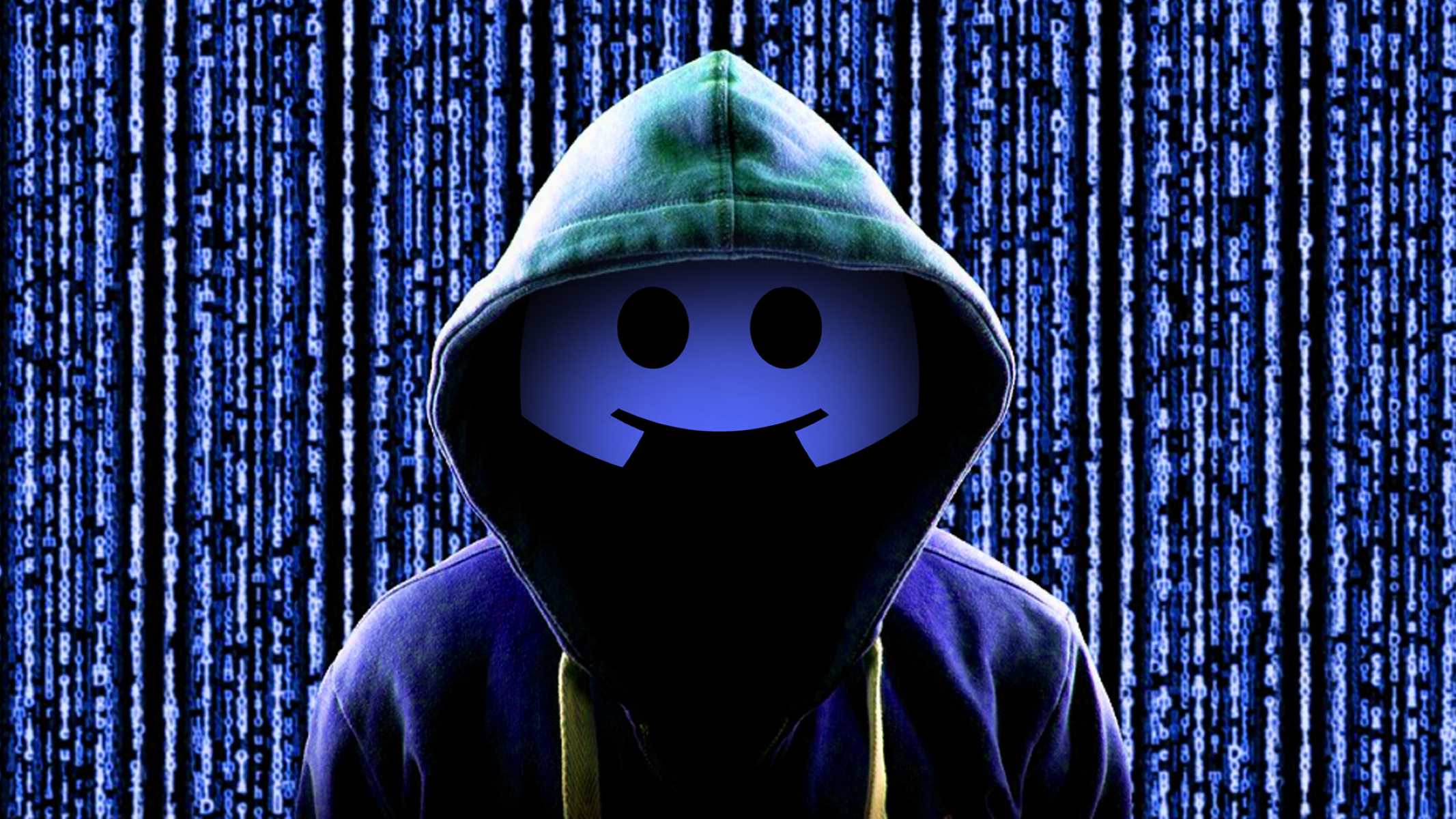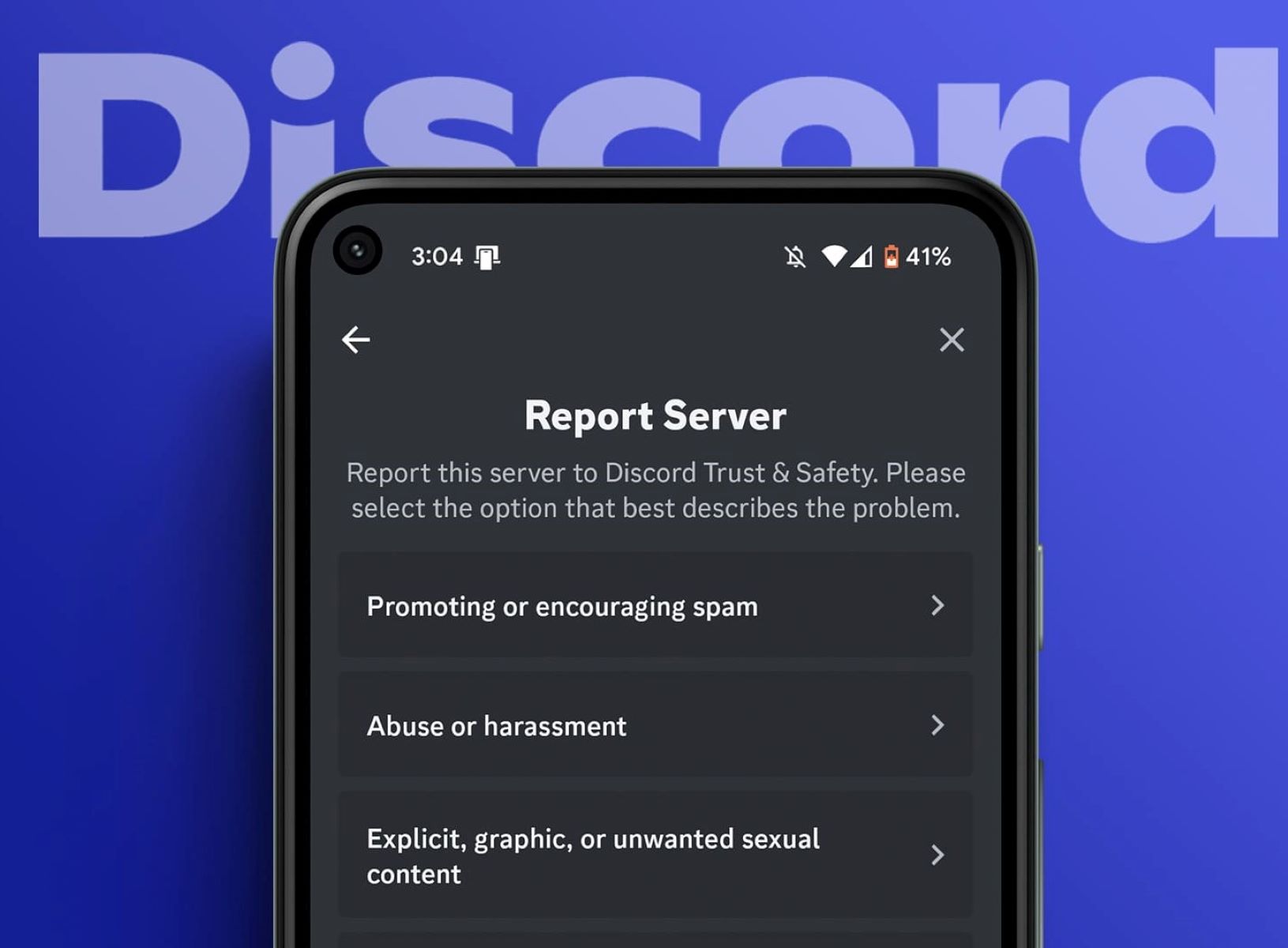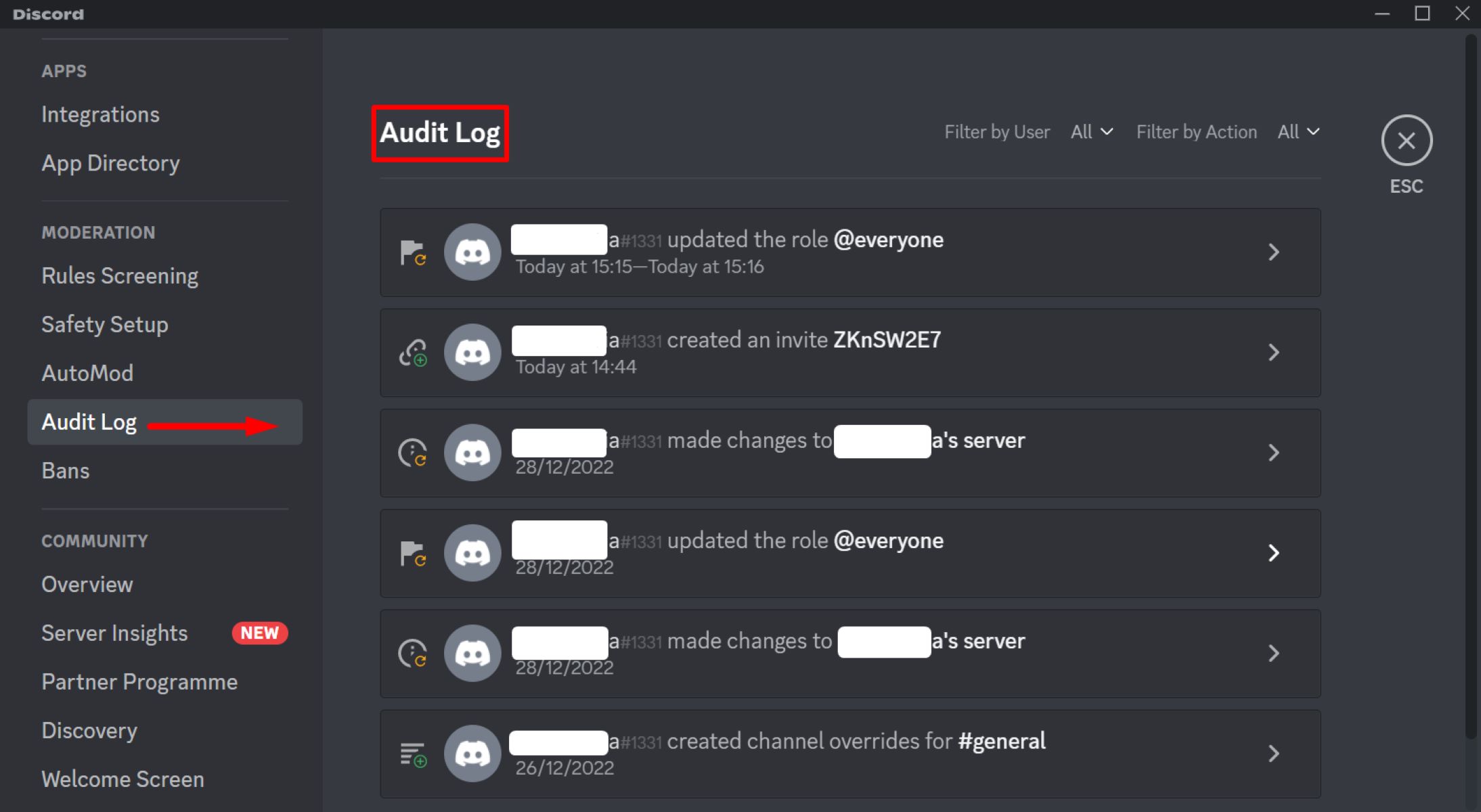Introduction
Welcome to the world of Discord, a popular communication platform designed for gamers, communities, and friends to chat, voice call, and share media. Discord servers are virtual spaces where like-minded individuals gather to discuss common interests, organize events, or simply hang out. With millions of active users, Discord servers have become an integral part of online communities.
However, like any online platform, Discord servers are vulnerable to hacking attempts. While hacking a Discord server is illegal and unethical, understanding the potential vulnerabilities can help server owners and administrators better secure their servers.
This article aims to explore different methods used to hack Discord servers, highlighting potential risks and offering insights into protecting your server from malicious attacks. It is important to note that all the techniques discussed here are for educational purposes only, and using them without authorization is a violation of the law.
Before diving into the various hacking techniques, it’s essential to emphasize the importance of maintaining strong security measures for your Discord server. Regularly updating server software, using strong passwords, enabling two-factor authentication, and monitoring server logs are just a few steps you can take to enhance the security of your server.
Furthermore, it’s crucial to foster a community that understands the risks and promotes safe online behavior. Educating your server members about phishing attempts, suspicious links, and the significance of protecting their personal information can go a long way in preventing hacking incidents.
In the following sections, we will explore different hacking techniques that malicious individuals may employ to compromise Discord servers. By understanding these methods, you can better anticipate potential threats and take proactive measures to safeguard your server.
Understanding Discord Servers
Discord servers are virtual communities where users can create, join, and participate in chat rooms known as “channels.” These servers are organized based on different topics, interests, or communities, allowing users to connect and communicate with like-minded individuals. By joining a Discord server, users can engage in text discussions, voice chats, share files, and even stream their gameplay.
When creating a Discord server, the owner has the ability to customize various aspects, such as the server’s name, icon, and layout. Server owners can also manage user permissions, roles, and channels, providing a structured and secure environment for the community.
Discord servers offer a wide range of features and functionality, making them ideal for hosting gaming communities, study groups, fan clubs, and more. With features like voice channels, role assignments, and bots, users can enhance their server experience by creating an interactive and engaging environment.
One of the key features that sets Discord servers apart from other communication platforms is the ability to create and invite bots. Bots are automated programs that can perform various tasks, such as moderating the server, playing music, delivering notifications, and even running mini-games. The extensive availability of bot integrations allows server owners to enhance the server’s functionality and provide unique experiences for their community members.
It’s important to note that while Discord servers are primarily used by gamers, they have evolved to cater to a much broader audience. Communities focused on music, art, technology, and other interests have also found a home on Discord. This versatility has contributed to the platform’s exponential growth and popularity among various communities.
Discord also offers a sense of anonymity to its users. While members can choose to share personal information, Discord usernames do not necessarily reveal a user’s real identity. This level of privacy can create a comfortable space for users to express themselves openly without the fear of judgment or prejudice.
Overall, Discord servers offer a dynamic and versatile platform for users to come together, connect, and communicate. However, it’s essential to understand that these virtual communities can be susceptible to hacking attempts if proper security measures are not in place. In the following sections, we will explore various hacking techniques that can compromise Discord servers and discuss strategies to protect your server and its members.
Scanning for Vulnerabilities
Before attempting to hack a Discord server, malicious individuals often start by scanning for vulnerabilities. Scanning involves examining the server’s settings, configurations, and potential weaknesses that can be exploited to gain unauthorized access.
One common scanning technique is port scanning, where an attacker examines the open ports on the server. By identifying open ports, the attacker can determine the services running on those ports and look for vulnerabilities associated with those services. For example, if a Discord server has an open port associated with outdated software or a known vulnerability, it becomes a prime target for exploitation.
Another scanning technique is web application scanning. Discord servers often have web-based interfaces for server management and community interaction. Attackers can use automated tools to scan these interfaces for common web vulnerabilities, such as SQL injection, cross-site scripting (XSS), or insecure file uploads. If any vulnerabilities are detected, the attacker can use them to gain unauthorized access or manipulate server functions.
Additionally, attackers may target user accounts to gain access to the server. By scanning for weak passwords, easily guessable usernames, or reused credentials from other sources, hackers can brute force their way into user accounts and ultimately gain access to the Discord server.
To protect your Discord server from scanning activities, it is vital to keep your server software up to date. Regularly applying patches and updates reduces the risk of known vulnerabilities being exploited. Additionally, ensure that any web-based interfaces or applications associated with the server undergo regular security assessments and are protected against common web vulnerabilities.
Furthermore, educate your server members about the importance of using strong, unique passwords and enable multi-factor authentication. Implementing account lockout policies and monitoring login attempts can also help detect and prevent unauthorized access attempts.
By proactively scanning your server for vulnerabilities and taking appropriate preventive measures, you can significantly reduce the risk of unauthorized access and protect the integrity of your Discord server and its community.
Social Engineering Techniques
Social engineering is a common method used by hackers to exploit human vulnerabilities and manipulate individuals into divulging sensitive information or granting unauthorized access. Discord servers are not immune to social engineering attacks, and users must remain vigilant to protect themselves and their servers.
One common social engineering technique is phishing. Attackers may impersonate trusted entities, such as Discord support or server administrators, and send convincing messages or emails requesting sensitive information or encouraging users to click on malicious links. These phishing attempts aim to trick users into revealing their Discord login credentials or granting access to their servers to the attacker.
Another social engineering technique is baiting, where attackers offer enticing rewards, such as exclusive game access or server perks, in exchange for users providing their account details or joining a compromised server. This technique preys on users’ desire to gain exclusive privileges and exploits their willingness to take risks in exchange for perceived benefits.
Preventing social engineering attacks requires both user awareness and server security measures. Educate your server members about the risks of social engineering and encourage them to be cautious when clicking on links, downloading files, or sharing personal information. Remind them to verify the identity of individuals requesting sensitive information or offering rewards before complying with such requests.
As a server owner or administrator, it is important to establish clear communication channels with your community and encourage transparency. Inform your members about the rules and guidelines for sharing personal information and emphasize the importance of maintaining privacy and security. Regularly monitor and moderate your server to detect and remove suspicious accounts or messages that may be indicative of social engineering attempts.
Implementing security measures such as two-factor authentication, email verification, and account validation can also serve as a deterrent against social engineering attacks. By adding an additional layer of protection, you make it more difficult for attackers to gain unauthorized access to user accounts and, subsequently, your Discord server.
Remember, social engineering attacks prey on human vulnerabilities and manipulation. By promoting a culture of awareness, education, and proactive security measures, you can significantly reduce the risk of falling victim to social engineering attacks and protect your Discord server and its community.
Brute Forcing User Credentials
Brute-forcing is a method used by hackers to gain unauthorized access to user accounts by systematically attempting various combinations of usernames and passwords until the correct credentials are discovered. It is an attack technique aimed at exploiting weak or easily guessable passwords.
When it comes to Discord servers, attackers may attempt to brute force user credentials to gain access to the server or individual user accounts. The process involves using automated tools that generate and test multiple combinations of usernames and passwords until a successful match is found.
Brute-forcing can be a time-consuming process, especially if the attacker is targeting accounts with strong passwords. However, it becomes significantly easier if users have weak passwords or reuse the same passwords across multiple platforms.
To protect your Discord server and its users from brute force attacks, it is crucial to encourage strong password practices. Advise your server members to create unique passwords that are at least eight characters long and include a combination of uppercase and lowercase letters, numbers, and special characters.
Implementing a password policy that enforces complexity requirements and regular password changes can also help mitigate the risk of brute-forcing. Additionally, educate your server members about the importance of not reusing passwords across multiple platforms and the dangers of using easily guessable information, such as names or dates, in passwords.
As a server owner or administrator, you can enhance security by implementing account lockout policies. This means that after a certain number of failed login attempts, an account will be temporarily locked, preventing further brute-forcing attempts. Monitoring server logs for a high number of failed login attempts can also indicate potential brute force attacks and prompt you to take additional security measures.
Regularly updating your server software to the latest version can also help protect against brute force attacks, as software updates often include security patches and enhancements that address vulnerabilities exploited by attackers.
By promoting and enforcing strong password practices, implementing account lockout policies, and keeping your server software up to date, you can significantly reduce the risk of brute force attacks and ensure the security of your Discord server and its users.
Exploiting Discord Bot Permissions
Discord bots are automated programs that can perform various tasks within a Discord server, such as moderating chats, playing music, or providing utility functions. Bots are granted specific permissions that define their capabilities and access levels within the server. However, if not properly managed, these permissions can be exploited by attackers to gain unauthorized access or perform malicious actions.
One common method of exploiting bot permissions is through unauthorized elevation of privileges. Attackers may try to manipulate the permissions of a bot or gain control of an existing bot with high-level permissions. By doing so, they can gain administrative control over the server, granting them the ability to modify server settings, delete channels, or kick or ban members.
Another method is using compromised bots to spread malware or execute malicious commands. Attackers can gain control of a poorly secured or abandoned bot and abuse its capabilities to deliver harmful content, compromise user accounts, or perform actions that disrupt the server or its members.
Preventing the exploitation of bot permissions requires vigilant management and careful consideration of the permissions granted to bots. As a server owner or administrator, only authorize trusted and reputable bots from verified sources. Before adding a bot to your server, review its permissions and ensure they align with the intended functionality and level of access required.
Regularly audit the bots present in your server to identify any suspicious or unnecessary permissions. Remove any bots with excessive or unnecessary permissions to minimize the potential impact of a compromised bot.
Monitoring server logs and bot activities can also help detect any unauthorized actions or suspicious behavior. Look for any abnormal usage patterns, unexpected command executions, or unauthorized changes to server settings, and take appropriate action if any anomalies are detected.
It is also important to keep the bots themselves up to date. Regularly check for updates from the bot’s developers and apply them promptly. Updates often include security patches that address potential vulnerabilities that could be exploited by attackers.
By carefully managing bot permissions, regularly monitoring bot activities, and keeping bots up to date, you can mitigate the risk of bot-based attacks and ensure the security and integrity of your Discord server.
DDoS Attacks on Discord Servers
A Distributed Denial of Service (DDoS) attack is a common technique used to disrupt the normal functioning of online services, including Discord servers. In a DDoS attack, multiple compromised devices flood the target server with an overwhelming amount of traffic, rendering it inaccessible to legitimate users.
DDoS attacks on Discord servers can cause significant disruptions, preventing users from joining or using the server, affecting communication, and undermining the overall experience of the community.
Attackers may launch DDoS attacks for various reasons, such as revenge, competition, or simply to cause chaos. They often rely on botnets, networks of compromised devices, to generate the massive amount of traffic required to overwhelm the target server. Botnets can consist of compromised computers, servers, or even Internet of Things (IoT) devices.
Protecting your Discord server from DDoS attacks can be challenging, as the traffic volume can be difficult to handle, even for well-equipped servers. However, there are measures you can take to minimize the impact of DDoS attacks:
First, consider using a reliable and reputable DDoS protection service. These services specialize in mitigating DDoS attacks by filtering out the malicious traffic and allowing legitimate traffic to reach the server. Research different providers and choose one that suits your server’s needs and budget.
Second, utilize load balancing techniques. Load balancing distributes incoming traffic across multiple servers, reducing the risk of a single server being overwhelmed by a DDoS attack. Implementing load balancing can help distribute and manage the traffic effectively.
Implement rate limiting mechanisms to prevent excessive requests from individual IP addresses. By setting limits on the number of requests from a single IP within a given timeframe, you can mitigate the impact of an attack by reducing the amount of traffic that reaches the server.
Regularly monitor your server for signs of traffic anomalies. Detecting unusual spikes in traffic or sudden surges in connection requests can indicate the beginning of a DDoS attack. Using monitoring tools and setting up alerts can help you respond quickly and take necessary measures to minimize the impact.
Finally, consider partnering with a hosting provider that offers DDoS protection as part of their services. These providers have robust infrastructure and expertise to handle and mitigate DDoS attacks, allowing you to focus on managing your Discord server rather than worrying about security concerns.
By implementing these measures, you can enhance the resilience of your Discord server against DDoS attacks and ensure a more stable and secure environment for your community.
Protecting Your Discord Server
Protecting your Discord server is crucial to maintain a safe and secure environment for your community. By implementing the following measures, you can enhance the security of your server and protect it from various threats:
1. Strong Passwords: Encourage all users to create strong and unique passwords for their Discord accounts. A strong password should be complex, combining uppercase and lowercase letters, numbers, and special characters. Discourage the use of easily guessable information, such as names or birthdays, in passwords.
2. Two-Factor Authentication (2FA): Enable two-factor authentication for all user accounts on your server. 2FA adds an extra layer of security by requiring users to provide a second verification method, such as a unique code generated by a mobile app, in addition to their password.
3. User Permissions: Regularly review and adjust the permissions assigned to different roles and users within your server. Grant access only to the necessary features and channels for each role or user to minimize the potential for abuse or unauthorized access.
4. Moderation and Content Filtering: Establish clear guidelines for acceptable behavior within your server and enforce them through active moderation. Implement bots or manually monitor chat channels to detect and remove inappropriate or abusive content. Encourage users to report any violations or suspicious activity.
5. Regular Software Updates: Keep your Discord server software and any associated applications up to date. Regularly check for updates and apply them promptly. Updates often include security patches that address potential vulnerabilities and protect against known attack vectors.
6. Bot Management: Only authorize and use trusted and reputable bots from verified sources. Review the permissions requested by each bot and ensure they align with the intended functionality and level of access required. Regularly audit the bots present in your server and remove any unnecessary or suspicious bots.
7. Educate Your Community: Promote security awareness within your server community. Educate your members about common security threats, such as phishing attempts and social engineering techniques, and advise them on how to protect their personal information and account security. Encourage reporting of any suspicious activities or concerns.
8. Regular Backups: Create regular backups of your server data, including channel configurations, roles, and permissions. In the event of a security breach or server issue, backups can help restore your server to a previous state and minimize data loss.
Remember, server security is an ongoing effort. Regularly reevaluate your security measures, stay updated on emerging threats, and adapt your strategies accordingly to ensure the continued security and well-being of your Discord server and its community.

























